The Alfa Romeo manual transmission offers a unique blend of performance, driving engagement, and heritage, making it a beloved feature among enthusiasts and a cornerstone of the brand’s identity.
1.1 Historical Overview of Alfa Romeo and Manual Transmissions
Alfa Romeo’s history with manual transmissions dates back to its early models, where driving engagement and performance were paramount. The iconic Giulia and 8C models showcased the brand’s commitment to precise, driver-focused gearboxes. Over the decades, Alfa Romeo refined its manual transmissions, introducing 5-speed and later 6-speed units that became synonymous with its sporty DNA. The development of Selespeed and Twin-Clutch Transmission (TCT) technology further highlighted the brand’s innovation in blending manual control with modern convenience. These advancements have cemented manual transmissions as a cornerstone of Alfa Romeo’s heritage and identity, appealing to enthusiasts who value a direct connection to the driving experience.
1.2 Importance of Manual Transmissions in Alfa Romeo Models
Manual transmissions are central to Alfa Romeo’s DNA, offering unparalleled driving engagement and precision. They provide direct control over gear shifts, enhancing the connection between driver and vehicle. Historically, Alfa Romeo’s manual gearboxes have been celebrated for their smooth, responsive operation, making them a hallmark of the brand’s sporty heritage. Enthusiasts prize these transmissions for their ability to deliver a more immersive and dynamic driving experience. Additionally, manual transmissions often contribute to better fuel efficiency and cost-effectiveness compared to automatic options, further solidifying their importance in Alfa Romeo’s lineup as a preferred choice for purists and performance-driven drivers.
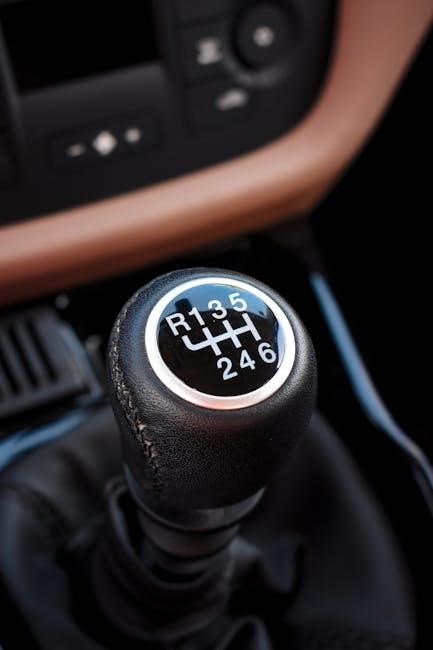
Historical Evolution of Manual Transmissions in Alfa Romeo
Alfa Romeo’s manual transmissions have evolved from early 4-speed units to modern 6-speed gearboxes, reflecting advancements in technology and performance while preserving the brand’s sporty heritage.
2.1 Early Models with Manual Transmissions
Alfa Romeo’s early manual transmissions debuted in iconic models like the Giulia and Giulietta, offering precise control and sporty driving dynamics. These initial 4-speed and later 5-speed gearboxes laid the groundwork for the brand’s reputation as a purveyor of driver-focused vehicles. The introduction of manual transmissions in these classic cars emphasized Alfa Romeo’s commitment to performance and mechanical connection, fostering a loyal following among enthusiasts. Over time, these early systems evolved, incorporating improved materials and engineering, yet they retained the essence of the brand’s heritage in delivering a tactile and engaging driving experience that remains central to Alfa Romeo’s identity.
2.2 Development of the 5-Speed and 6-Speed Manual Gearboxes
Alfa Romeo’s manual transmission evolution saw significant advancements with the introduction of 5-speed and later 6-speed gearboxes. The 5-speed manual, first appearing in the 1970s, offered smoother shifting and better gear ratios, enhancing both performance and driver engagement. The 6-speed manual, introduced in the 1990s, featured improved materials and engineering, reducing weight and enhancing durability. These gearboxes were refined to provide precise control and a sporty feel, becoming a hallmark of Alfa Romeo’s driving experience. Models like the Alfa Romeo 159 and Giulia showcased these transmissions, blending performance with a connection to the road that enthusiasts cherished, solidifying the brand’s reputation for exceptional manual transmissions.
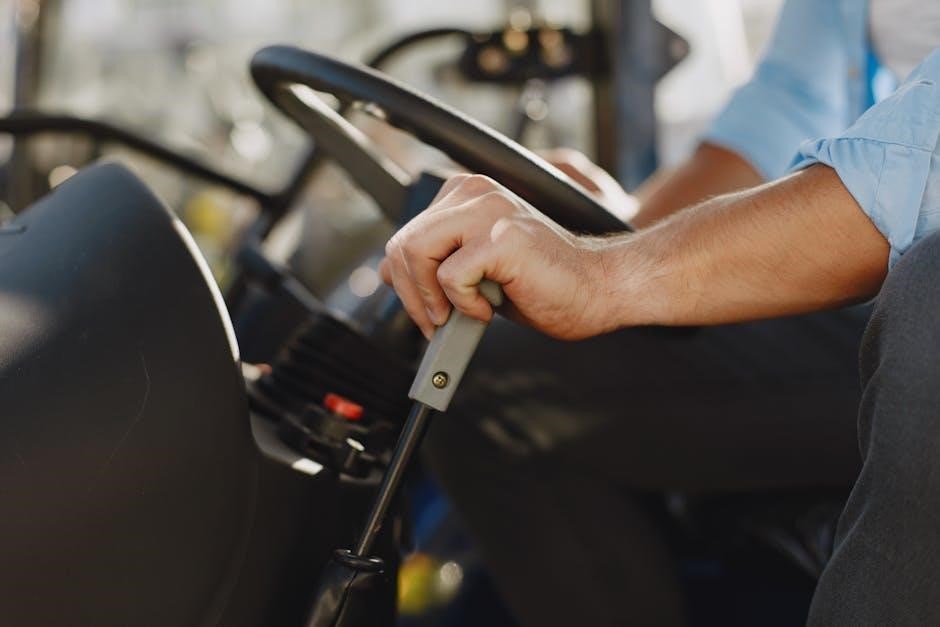
Technical Overview of Alfa Romeo Manual Transmissions
Alfa Romeo’s manual transmissions combine robust mechanical components with innovative technologies like Selespeed and TCT, ensuring precise control and seamless performance, reflecting the brand’s engineering excellence.
3.1 Mechanical Components of the Manual Gearbox
The Alfa Romeo manual gearbox consists of a robust assembly of mechanical components, including gears, shafts, bearings, and synchromesh rings, designed to ensure smooth and precise gear changes. The clutch system, operated by a pedal, engages and disengages the engine from the transmission, allowing drivers to manually control shifting. High-strength materials are used to enhance durability and performance, particularly in models like the Giulia, which features a 6-speed manual gearbox. These components work in harmony to deliver Alfa Romeo’s signature driving experience, blending responsiveness with reliability and contributing to the brand’s reputation for exceptional performance and driver engagement.
3.2 Selespeed and Other Automated Manual Transmissions
Alfa Romeo introduced Selespeed, an automated manual transmission developed by Magneti Marelli, offering a hybrid between manual and automatic driving. This system uses an electronic clutch actuator, eliminating the need for a manual clutch pedal while retaining the ability to shift gears manually via steering wheel paddles or the gear lever. Selespeed combines the convenience of an automatic with the engagement of a manual, providing quick and smooth transitions. Featured in models like the 147, 159, and MiTo, Selespeed enhanced urban driving comfort while preserving Alfa Romeo’s signature driving dynamics. This technology marked a step toward blending tradition with modern innovation in transmission design.
3.3 Twin-Clutch Transmission (TCT) Technology
Alfa Romeo’s Twin-Clutch Transmission (TCT) represents a leap in transmission innovation, combining the efficiency of a manual gearbox with the convenience of an automatic. The TCT system uses two clutches to pre-select gears, enabling lightning-fast shifts without interrupting power delivery. This technology enhances acceleration and fuel efficiency while maintaining the engaging driving experience synonymous with Alfa Romeo. Featured in high-performance models like the Giulia Quadrifoglio, TCT allows drivers to choose between automatic mode for everyday driving or manual mode for sporty, dynamic control. Its seamless operation and responsive performance make it a standout in modern automotive engineering, blending tradition with cutting-edge technology.

Benefits of Manual Transmissions in Alfa Romeo Vehicles
Manual transmissions in Alfa Romeo vehicles offer enhanced driving engagement, precise control, and improved fuel efficiency. They also deliver cost-effectiveness compared to automatic options, making them a preferred choice for enthusiasts.
4.1 Enhanced Driving Experience and Control
The Alfa Romeo manual transmission provides an enhanced driving experience by offering direct control over gear shifts, fostering a deeper connection between the driver and the vehicle. This setup allows for precise acceleration and responsive handling, making it ideal for spirited driving. Enthusiasts appreciate the tactile feedback and the ability to optimize performance in various driving conditions. The manual gearbox also contributes to better fuel efficiency, especially in city cycles, while maintaining the sporty DNA of Alfa Romeo models. This combination of responsiveness and efficiency creates a more immersive and engaging journey, making manual transmissions a preferred choice for many drivers who value both performance and control.
4.2 Fuel Efficiency and Performance
Alfa Romeo manual transmissions are designed to deliver enhanced fuel efficiency without compromising on performance. Models like the Alfa Romeo MiTo, equipped with a 1.4 TB MultiAir engine and manual gearbox, achieve up to 38.7 mpg in urban cycles, ensuring economical driving. Similarly, the Giulia and 4C models showcase how manual transmissions optimize engine performance, offering responsive acceleration and precise control. By allowing drivers to manage gear shifts, these transmissions maximize fuel efficiency while maintaining the sporty DNA of Alfa Romeo vehicles. This balance of economy and power makes manual transmissions a preferred choice for drivers seeking both efficiency and driving excitement.
4.4 Cost-Effectiveness Compared to Automatic Transmissions
Manual transmissions in Alfa Romeo vehicles are often more cost-effective than automatics due to their simpler design and lower production costs. With fewer components, they typically require less maintenance and have lower repair expenses. Additionally, manual transmissions can offer better fuel efficiency in certain driving conditions, reducing long-term fuel costs. Many Alfa Romeo models, such as the Giulia, are priced lower when equipped with a manual gearbox, making them more accessible to budget-conscious buyers. Overall, the combination of lower upfront costs, reduced maintenance, and potential fuel savings makes manual transmissions a financially appealing option for many drivers.
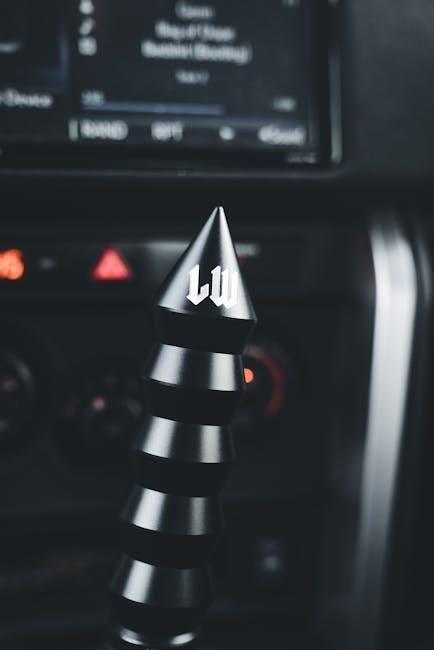
Popular Alfa Romeo Models with Manual Transmissions
The Alfa Romeo Giulia, 4C, 8C, and restomod Giulia Sprint are popular models with manual transmissions, offering precise control and a traditional driving experience.
5.1 Alfa Romeo Giulia with 6-Speed Manual
The Alfa Romeo Giulia stands out as a modern sedan with a classic touch, offering a 6-speed manual transmission that delivers a precise and engaging driving experience. This gearbox, paired with engines like the 2.0L turbocharged inline-four, provides smooth shifting and responsive acceleration. Enthusiasts praise the manual option for its direct connection to the road, enhancing control and precision. While the Giulia Quadrifoglio in the U.S. is only available with an automatic, European models retain the 6-speed manual, making it a sought-after choice for purists. The Giulia’s manual transmission underscores Alfa Romeo’s commitment to blending heritage with modern performance.
5.2 Alfa Romeo 4C and Its Manual Transmission
The Alfa Romeo 4C is a lightweight, two-seater sports car that embodies the spirit of driving purity, with its 6-speed manual transmission being a key element of its appeal. Designed for drivers who crave a direct connection to the road, the manual gearbox in the 4C offers precise and smooth shifts, complementing its agile handling and responsive steering. Paired with a 1.8L turbocharged engine, the 4C delivers a thrilling driving experience that is quintessentially Alfa Romeo. The manual transmission enhances the car’s sporty character, making it a favorite among enthusiasts who value the tactile joy of shifting gears and the control it provides.
5.3 Alfa Romeo 8C and the Revival of Manual Shifts
The Alfa Romeo 8C stands as a testament to the brand’s commitment to driving excellence, featuring a 6-speed manual transmission that embodies the essence of classic motoring. This exclusive model combines a powerful 4.7L V8 engine with a responsive manual gearbox, offering drivers unparalleled control and engagement. The 8C’s manual transmission is celebrated for its smooth, precise shifts, which enhance the car’s dynamic handling and emotional driving experience. As a limited-production vehicle, the 8C represents a revival of Alfa Romeo’s heritage, catering to purists who cherish the tactile connection of a manual shift in a modern, high-performance package.
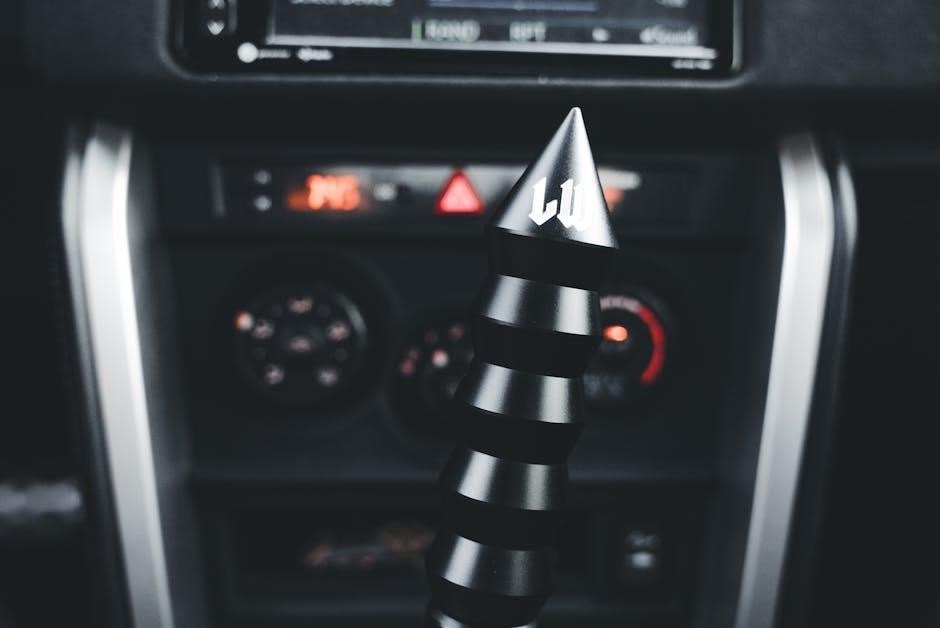
Maintenance and Care for Alfa Romeo Manual Transmissions
Regular servicing, fluid changes, and clutch inspections are essential for maintaining the longevity and performance of Alfa Romeo manual transmissions, ensuring smooth operation and preventing premature wear.
6.1 Regular Servicing and Oil Changes
Regular servicing and oil changes are crucial for maintaining the optimal performance of Alfa Romeo manual transmissions. Owners should follow the manufacturer’s recommended schedule for fluid replacements, typically every 30,000 to 60,000 miles, depending on driving conditions. Synthetic oils are often preferred for their superior lubrication properties. During servicing, technicians inspect the clutch, gear synchronizers, and bearings for wear. Proper maintenance ensures smooth shifting, prevents premature wear, and maintains the transmission’s responsiveness. Neglecting these routines can lead to costly repairs, such as replacing worn-out components or rebuilding the gearbox. Consistent care extends the lifespan of the manual transmission, preserving its performance and reliability over time.
6.2 Common Issues and Troubleshooting Tips
Common issues with Alfa Romeo manual transmissions include clutch wear, difficulty shifting gears, and synchro ring degradation. Clutch problems often manifest as a spongy pedal feel or slipping during acceleration. Shifting difficulties may indicate low transmission fluid levels or worn synchronizers. To address these, check the clutch hydraulic system for leaks and top up fluids as needed. Worn components like the clutch or synchronizers may require replacement. Regular inspection of the gear linkage and bushes can prevent misalignment issues. If gears grind or hesitate, ensure proper clutch engagement and disengage fully before shifting. Promptly addressing these issues prevents further damage and maintains smooth operation.
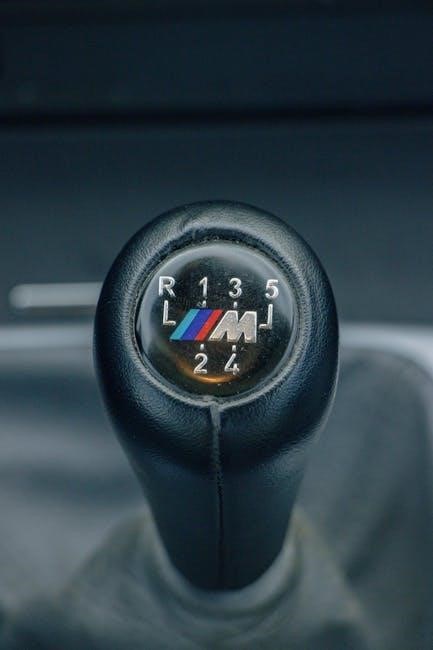
Future of Manual Transmissions in Alfa Romeo
Alfa Romeo continues to explore manual transmission options, balancing heritage with modern innovation, amid rumors of new models and potential collaborations, ensuring driving purists remain delighted.
7.1 Rumors of New Manual Transmission Models
Excitement surrounds rumors of Alfa Romeo introducing new manual transmission models, potentially reviving the thrill of analog driving. Reports suggest collaborations with luxury brands like Maserati, hinting at high-performance manual-equipped supercars. Enthusiasts speculate about a possible manual Giulia Quadrifoglio, blending heritage with modern power. These developments underscore Alfa Romeo’s commitment to catering to purists while embracing innovation, ensuring manual transmissions remain a vital part of its legacy in an increasingly automatic world.
7.2 Potential Collaboration with Other Brands
Alfa Romeo is exploring collaborations with luxury brands like Maserati to develop new manual transmission models, reviving the analog driving experience. These partnerships, inspired by past successes like the 33 Stradale, aim to create high-performance supercars with manual gearboxes. Such ventures would not only enhance Alfa Romeo’s lineup but also cater to enthusiasts seeking authentic driving experiences. These collaborations underscore the brand’s dedication to preserving manual transmissions in a market dominated by automatics, ensuring a future where heritage meets innovation.
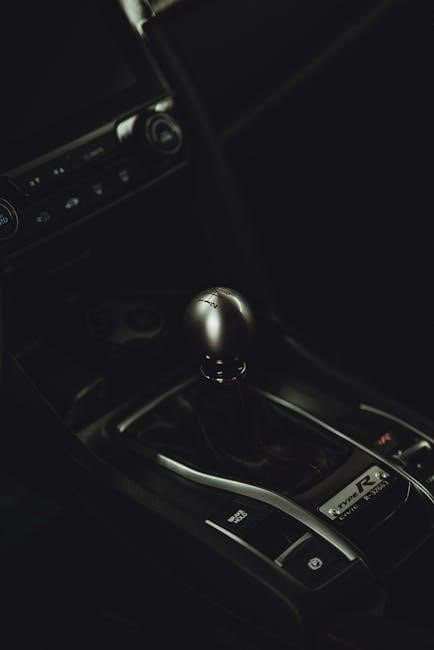
Cultural Significance of Manual Transmissions in Alfa Romeo
Manual transmissions embody Alfa Romeo’s racing heritage and enthusiast culture, symbolizing a connection to the brand’s iconic past and passionate driver community.
8.1 Enthusiast Community and Love for Manual Shifts
The Alfa Romeo enthusiast community cherishes manual transmissions for their tactile driving experience and connection to the brand’s racing heritage. Forums and clubs worldwide celebrate the joy of shifting gears, with models like the Giulia and 4C frequently highlighted for their engaging manual setups. This passion reflects a deep emotional bond between drivers and the mechanical soul of Alfa Romeo vehicles, emphasizing the brand’s identity as a purveyor of driver-centric machines.
8.2 Racing Heritage and Manual Transmission Legacy
Alfa Romeo’s racing heritage is deeply intertwined with its manual transmission legacy, as the brand’s iconic models, such as the 8C and Giulia, were built for performance and driver control. Manual transmissions have historically been the preferred choice in racing for their precision and responsiveness. The brand’s motorsport success, including victories in Formula 1 and endurance racing, was often achieved with manual gearboxes, solidifying their reputation as a symbol of driving excellence. This legacy continues to inspire modern Alfa Romeo models, offering enthusiasts a connection to the brand’s storied past and its commitment to delivering an authentic driving experience.
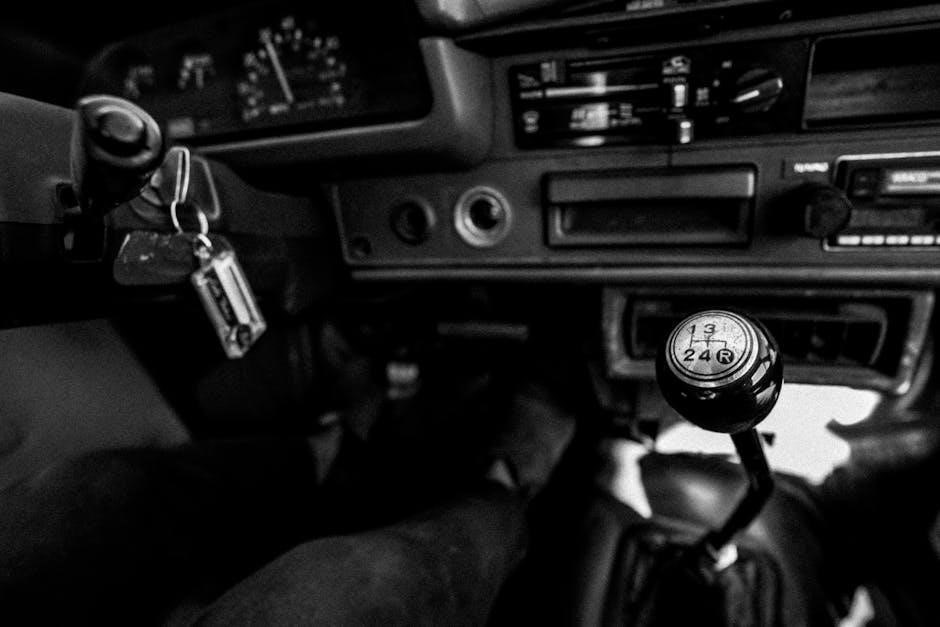
Driving Experience with Alfa Romeo Manual Transmissions
The Alfa Romeo manual transmission delivers a driving experience that combines smooth shifting with responsive acceleration, offering drivers a mechanical connection to the car for enhanced control and exhilaration.
9.1 Smooth Shifting and Responsive Acceleration
Alfa Romeo’s manual transmissions are renowned for their smooth shifting and responsive acceleration, offering drivers a precise and engaging connection to the vehicle. The Giulia’s 6-speed manual gearbox, for instance, provides crisp gear changes, allowing for seamless power delivery. This mechanical synergy enhances the driving experience, making every acceleration feel intuitive and exhilarating. The combination of a well-tuned clutch and short shift throws ensures that drivers can fully exploit the engine’s potential, whether on winding roads or city streets. This blend of precision and responsiveness underscores Alfa Romeo’s commitment to delivering a dynamic and rewarding drive in its manual transmission models.
9.2 Comparison with Automatic and Semi-Automatic Options
Alfa Romeo manual transmissions offer a distinct driving experience compared to automatic and semi-automatic options. While automatics prioritize convenience and smoothness, manuals deliver a purist connection to the vehicle, appealing to enthusiasts who value control and engagement. Semi-automatic transmissions, like the Selespeed, blend manual shifting with automated clutch operation, offering a compromise between driver involvement and ease. However, the manual gearbox remains the preferred choice for those seeking a more immersive and responsive drive, aligning with Alfa Romeo’s heritage of driver-centric performance. The manual transmission’s tactile feedback and precise shifting create a more direct link between driver and car, making it a standout feature for purists.

Troubleshooting Common Manual Transmission Issues
Common issues include clutch wear, gear slippage, and sensor malfunctions. Early diagnosis and professional repair are crucial to prevent further damage and ensure smooth operation.
10.1 Diagnosing Clutch and Gear Problems
Diagnosing clutch and gear issues in Alfa Romeo manual transmissions often starts with identifying symptoms like difficulty shifting gears, grinding noises, or the clutch failing to engage properly. Drivers may notice a spongy clutch pedal or incomplete gear engagement, indicating potential wear or misalignment. Technicians typically inspect the clutch for wear, check gear teeth for damage, and test hydraulic systems for leaks or air contamination. Modern models may also utilize diagnostic tools to identify sensor malfunctions or software issues affecting transmission performance. Early detection is crucial to prevent further damage and ensure the transmission operates smoothly and efficiently. Regular maintenance can help mitigate these common problems.
10.2 Repair and Replacement Options
Repairing or replacing components of an Alfa Romeo manual transmission requires precision and expertise. Common issues like clutch wear or gear damage can often be addressed by replacing specific parts rather than the entire unit. For example, a worn clutch can be replaced during a major service, while damaged gear teeth may require machining or new components. In severe cases, such as internal gearbox damage, a full transmission replacement may be necessary. Alfa Romeo authorized service centers typically offer genuine parts and specialized tools to ensure proper repair. Additionally, refurbished transmissions are a cost-effective alternative to brand-new units, providing reliable performance without compromising quality. Regular maintenance can help prevent major repairs and extend the transmission’s lifespan.
Alfa Romeo manual transmissions blend performance, heritage, and driving engagement, offering enthusiasts a unique connection to the road and the brand’s legacy of passion and innovation.
11.1 Summary of Alfa Romeo Manual Transmission Excellence
Alfa Romeo manual transmissions exemplify a perfect blend of heritage and innovation, delivering unparalleled driving engagement and performance. From the Giulia’s 6-speed precision to the 4C’s lightweight efficiency, these gearboxes embody the brand’s passion for driving excellence. The twin-clutch technology and Selespeed systems highlight Alfa’s commitment to merging tradition with modernity. Enthusiasts praise the direct connection and tactile experience, making manual transmissions a cornerstone of Alfa Romeo’s identity. With models like the 8C reviving classic shifting joy, Alfa Romeo continues to celebrate the art of manual driving, ensuring its legacy endures in a world of automation.
11.2 Final Thoughts on the Future of Manual Shifts
The future of manual shifts in Alfa Romeo remains promising, with enthusiasts and the brand itself championing the tactile driving experience. Rumors suggest potential collaborations with Maserati on manual transmission supercars, reviving a legacy of analog driving joy. While automation dominates the market, Alfa Romeo’s commitment to manual transmissions, as seen in models like the Giulia Quadrifoglio, indicates a dedication to preserving driver engagement. The rise of electric vehicles may shift priorities, but the niche demand for manual transmissions ensures their survival in performance-focused cars. Alfa Romeo’s heritage and enthusiast demand will likely keep manual shifts alive, blending tradition with modern innovation.